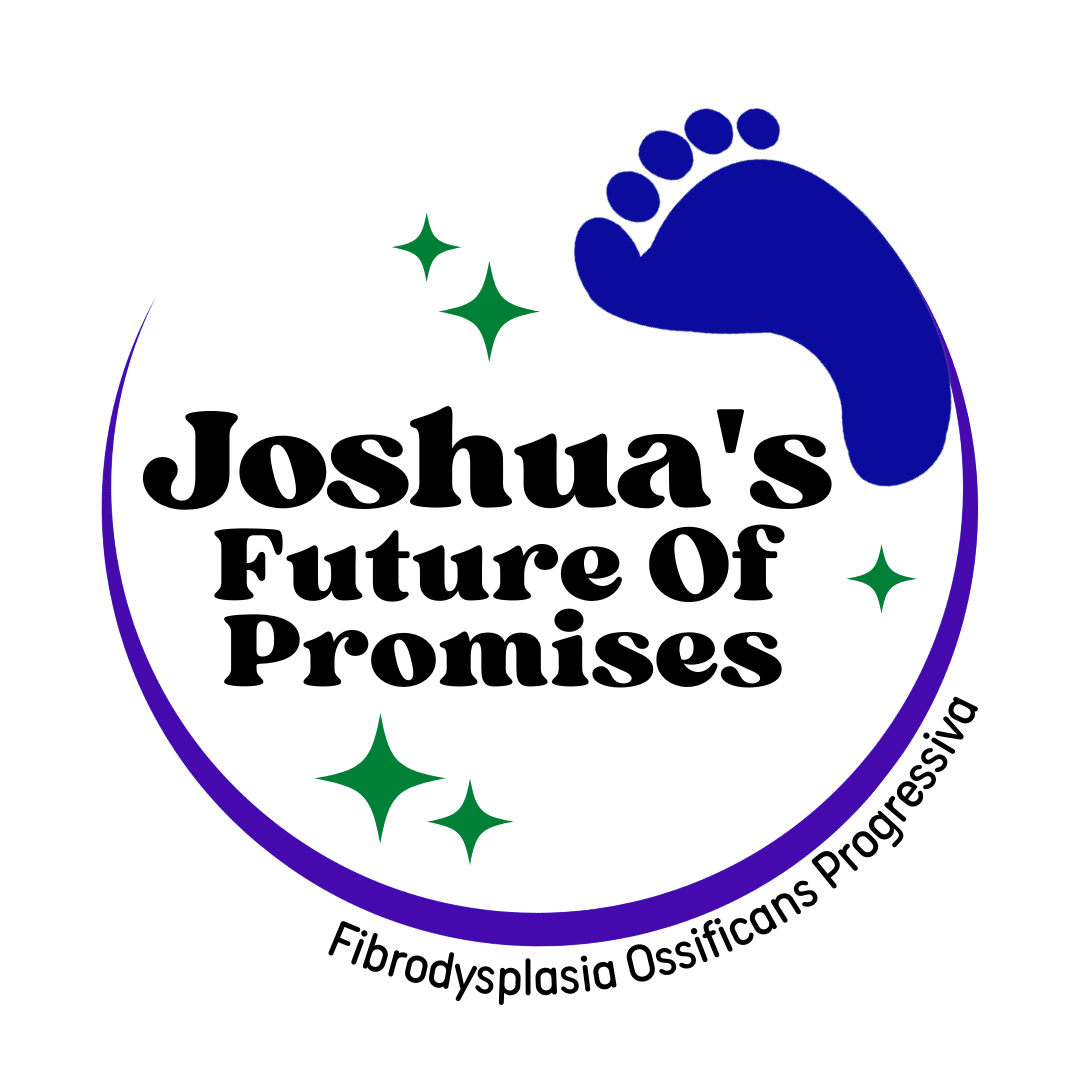
Joshua’s Story
Hi, my name is Joshua Scoble and I am eighteen years old. I was diagnosed with Fibrodysplasia Ossificans Progressiva (FOP) when I was only three months old. FOP is a very rare inherited connective tissue disorder. Specifically, this disorder causes my body’s skeletal muscles and soft connective tissue to undergo a transformation into bone, progressively locking my joints in place and making movement difficult or impossible. There are less than 800 confirmed cases of FOP worldwide.
My shoulders and neck are now fused. Anytime I have trauma to my body, such as tripping, bumping or injections, I am at risk for a "flare up". These "flare ups" cause me to swell and then it turns my affected muscle into bone. Since FOP progresses differently for each person, we just don't know how long it will be before I lose my joint movements.
Joshua’s Future of Promises is a non-profit organization set up by Joshua Scoble’s family in an effort to raise awareness and funds for FOP research, as well as to help support families affected by FOP. With your continued support a cure is within reach! There have been some recent findings in FOP research, and a treatment is currently under development!
For more information about FOP please visit the IFOPA Web site at www.ifopa.org.
Info about FOP
For more information about FOP, please visit the International Fibrodysplasia Ossificans Progressiva Association (IFOPA) at www.ifopa.org.
Click here to read more about Dr. Kaplan's continuing search for a cure.-
Fibrodysplasia Ossificans Progressiva is one of the rarest, most disabling genetic conditions known to medicine, it causes bone to form in muscles, tendons, ligaments and other connective tissues. Bridges of extra bone develop across joints, progressively restricting movement and forming a second skeleton that imprisons the body in bone. There are no other known examples in medicine of one normal organ system turning into another.
-
Spontaneous flare-ups of the disease arise in defined temporal and spatial patterns, resulting in ribbons and sheets of bone that fuse the joints of the axial and appendicular skeleton, entombing a patient in a skeleton of heterotopic bone.
-
The information obtained from studying this disease will have far reaching implications for the treatment of common disorders such as fractures, osteoporosis, hip replacement surgery, and other forms of heterotopic ossification that occur in trauma and burn victims.
-
Genetic disease affecting 1 in 2 million people
No ethnic, racial, or religious patterns
700 confirmed cases across the globe
285 known cases in the United States
-
Characteristic malformations of the great toe
Flare-ups occur spontaneously or following bodily trauma such as: childhood immunizations, falls while playing, viral illnesses
Misdiagnosed in a majority of cases as cancer
Surgery makes the condition worse
There are no effective treatments
-
Researchers at the University of Pennsylvania School of Medicine, the only laboratory in the US dedicated to FOP research, announced the Discovery of the FOP Gene in Nature Genetics in April 2006.
10,000 sq. ft. of shared research space in the Department of Orthopaedic Surgery
3 principal investigators with 15 post-doctoral fellows, students, scientists, and staff
Funds spent on research - Approx. $1.5 million/year
75% from FOP family fundraising and donations
25% from institutional support (NIH/NIAMS, Orthopaedic Research and Education Foundation)
